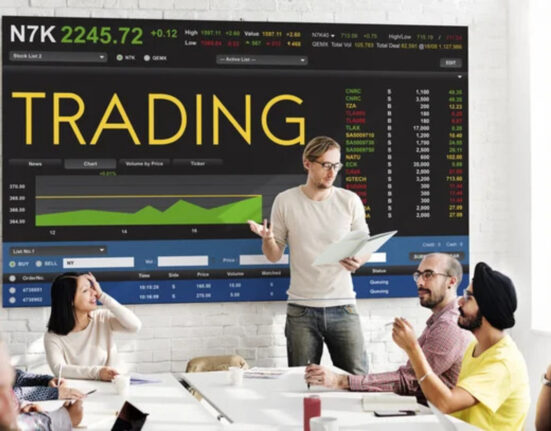Forex trading, also known as foreign exchange trading or FX trading, is the act of buying and selling currencies to make a profit. It is one of the largest and most liquid markets in the world, attracting traders of all levels. This article provides a comprehensive guide on how to start forex trading, covering the essential steps and considerations.
Understanding the Basics of Forex Trading

Before diving into the forex market, it’s crucial to understand its fundamental aspects:
- Currency Pairs: Forex trading involves the exchange of currency pairs, such as EUR/USD or GBP/JPY. Each pair consists of a base currency and a quote currency.
- Leverage: This allows traders to control a large position with a relatively small amount of capital. While leverage can amplify profits, it can also increase losses.
- Pips: A pip is the smallest price move in a currency pair. Understanding pips is essential for calculating profits and losses.
Example: If EUR/USD moves from 1.1000 to 1.1050, it has moved 50 pips.
Choosing the Right Forex Broker

Selecting a reputable forex broker is a vital step. Consider the following factors:
- Regulation: Ensure the broker is regulated by a recognized financial authority, such as the FCA (Financial Conduct Authority) in the UK or the SEC (Securities and Exchange Commission) in the USA.
- Trading Platform: A user-friendly and reliable trading platform, such as MetaTrader 4 or 5, is essential.
- Spreads and Commissions: Compare the spreads and commissions charged by different brokers. Lower costs can significantly impact your profitability.
- Customer Support: Reliable customer service is crucial, especially for beginners who might need assistance.
Comparative Table: Key Features of Popular Forex Brokers
| Broker | Regulation | Trading Platform | Spread (EUR/USD) | Leverage | Customer Support |
|---|---|---|---|---|---|
| Broker A | FCA | MetaTrader 4 | 0.8 pips | 1:30 | 24/5 |
| Broker B | SEC | MetaTrader 5 | 1.0 pips | 1:50 | 24/7 |
| Broker C | ASIC | cTrader | 0.6 pips | 1:20 | 24/5 |
Setting Up Your Trading Account

Once you have chosen a broker, the next step is to set up your trading account:
- Register: Sign up on the broker’s website and complete the registration process.
- Verification: Submit the required documents for identity and address verification.
- Deposit Funds: Fund your account using available payment methods like bank transfer, credit card, or e-wallet.
- Demo Account: Start with a demo account to practice trading without risking real money. This helps you get familiar with the trading platform and develop strategies.
Learning Forex Trading Strategies

Successful forex trading requires a well-thought-out strategy. Some popular forex trading strategies include:
- Scalping: Involves making quick trades to capitalize on small price movements. It requires high concentration and quick decision-making.
- Day Trading: Positions are opened and closed within the same trading day, avoiding overnight risk.
- Swing Trading: Involves holding positions for several days to take advantage of medium-term price movements.
- Position Trading: Long-term strategy where positions are held for weeks or months.
Tip: Backtest your strategies using historical data to evaluate their effectiveness before applying them in live trading.
Managing Risks in Forex Trading

Risk management is crucial to avoid significant losses. Implement these risk management techniques:
- Stop-Loss Orders: Set stop-loss orders to automatically close a trade at a predetermined loss level.
- Position Sizing: Determine the size of your trade based on your risk tolerance and account balance.
- Diversification: Avoid putting all your capital in a single trade or currency pair.
- Risk/Reward Ratio: Aim for a favorable risk/reward ratio, typically 1:2 or higher.
Keeping Up with Market Trends and News

Staying informed about market trends and news is essential for making informed trading decisions. Important resources include:
- Economic Calendars: Track key economic events and announcements that might impact currency prices.
- News Websites: Follow reputable financial news websites like Bloomberg, Reuters, and CNBC.
- Social Media: Join forex trading communities on platforms like Twitter and LinkedIn for real-time insights and discussions.
Incorporating these steps and considerations will set you on the path to becoming a proficient forex trader. Remember, success in forex trading comes with continuous learning and adapting to market conditions.








Leave feedback about this